
Background information
Van life with a dog: freedom or stress on four wheels?
by Darina Schweizer

A Zurich start-up has dedicated itself to measuring brain waves. In future, this should be possible with true wireless headphones. I spoke to the co-founder of Idun Technologies about this.
I meet Simon Bachmann in a half-empty office building in Opfikon. The CEO and co-founder of Idun Technologies works here with his 19-strong team on headphones and software that can measure our brains. What sounds like something out of a science fiction film made in Zurich, Simon shows me on site. Brain waves have been measured for diagnostic and scientific applications for decades. The Zurich start-up now wants to make this accessible to the consumer market.
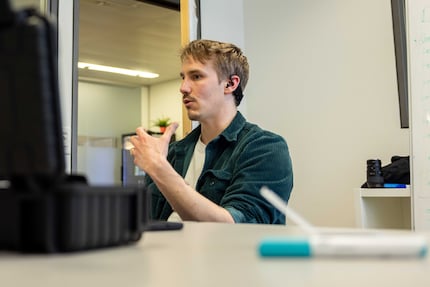
Normally, Simon's co-founder Séverine Gisin would also be found in this office - but she is currently on maternity leave. Founder and co-founder met on the Master's programme in Health Sciences and Technology at ETH. They founded Idun Technologies as an ETH spin-off in 2017. "Preventive health has always been exciting for us. We saw the development of bio-sensors as the most important element," Simon explains to me. The team first developed a sensor T-shirt, then came up with the idea of headphones, which has remained to this day.
I want to know from Simon exactly what these futuristic headphones, which are connected to a headband at the back, can do. "With our Idun 'Guardian' headphones and their biosensors, we can measure human brain waves in the auditory canal," he explains. This is exciting for sleep data, for example, and works like this: By placing electrodes on the skin, neuronal activity is measured. In technical terms, this is called an electroencephalogram, or EEG for short. Normally this is measured with electrodes on the head, but Idun can do this in the ear canal with the Guardian headphones that the Zurich start-up recently launched on the market.
Simon explains how this type of measurement works: "The headphones perform what is known as a biopotential measurement. As soon as the electrodes touch the skin, the measurement can begin. The electrodes measure the electrical potentials of the brain that are generated during neuronal activity. The signals can then be interpreted (e.g. frequency bands or amplitude strength), which provides information about sleep quality or cognitive performance. So far, so understandable - and futuristic.
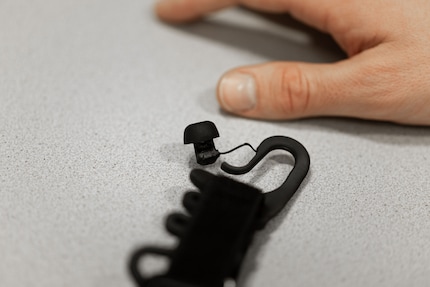
Smartwatches such as the Apple Watch use ECG (electrocardiogram) to measure our heart rates and derive data from them - but the EEG measurement of the Idun headphones is many times more accurate and provides information that a smartwatch cannot, says Simon. The smartwatch measures physiological data from the body, but not from the central nervous system. However, this is our "control centre".
Thanks to neuroscientific data, the brain can be connected to software, so to speak. And why do we need or want this? "The frequency images can be used to measure the wearer's sleep quality, brain effort, focus or eye movements," Simon explains. This makes it possible, for example, to evaluate when someone is particularly focussed, should take a break or even have a power nap. In an ideal version, connections with smart home applications, for example for light settings - i.e. dimmed light when you are tired - should also be possible thanks to brainwave measurement.
Idun is not the only company focussing on "neurotech". Many large corporations have been researching such technologies for a long time. Probably the best known of these is Elon Musk's Neuralink. But LG, with its Breeze Buds, is also planning to launch a similar product on the market.
Normally, these measurements are taken with nets or caps on the head. Fitting these so-called brain measurement caps is very time-consuming. They require a gel, which has to be laboriously washed out of the hair after the measurement. "Nobody would wear such a swimming cap in everyday life, let alone apply the gel," explains Simon.
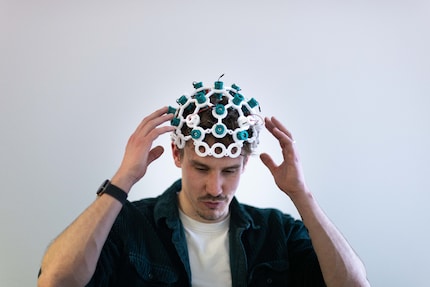
Idun claims to make the same measurements with headphones, and with comparable signal quality. Simon explains: "We were looking for a form that was non-invasive but still reliable. Our sensors for the ears achieve this." In addition, because the headphone form is worn in everyday life, more comprehensive measurements are possible - much more data can be generated due to the more frequent wearing time.
This could be used to calculate the cognitive workload of an office job, for example. Simon looks to the future: "These results could then be linked to the Outlook calendar and the day could be planned more effectively." For example: Those who are tired in the morning will then have fewer appointments entered - that sounds practical so far. It fits in with the fact that many people wear headphones when working in the office anyway. But the first problem is that the Idun Guardian, the latest EEG headphones from Idun, do not yet play music. "We're still working on that," says Simon.
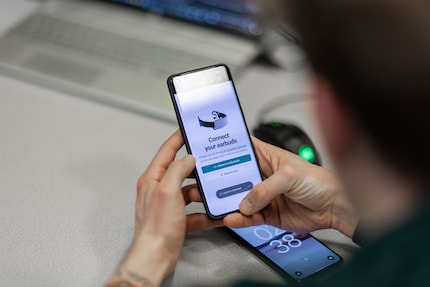
It is obvious that measuring cognitive workload poses some risks. Anyone who often lets their lazy self hang out in the office with a "deep cognitive workload" will be found out faster than they can think. The Idun team is aware of this danger: "We rely on the end users to control this," says Simon.
A small all-clear: brainwave measurement in everyday life is not yet available. So far, Idun is only selling the products to business customers - or to investors. Simon enumerates: "Sony and Takeda, a large Japanese pharmaceutical company, have already invested in our technologies." However, Simon does not want to tell me the exact collaboration with these companies - a company secret. Just as secret as the investor collaboration is the technology behind it. Simon won't reveal how Idun's electrodes work or the composition of the material used.
However, he shows me the small laboratory where the team produced the sensors themselves until recently. The lab is full of boxes, special ovens and prototype material. However, the team now has the sensors produced externally. The team's materials technician, Katja Junker, could no longer keep up with production. What's more, this work has become almost boring, they explain to me with a laugh. She is already working on the next project.
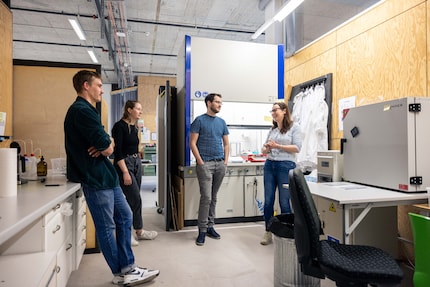
Auriel Valtancoli, who works as a sales and business developer in the team, shows in a simulation what the headphones can already do today. The test setup: Two cardboard figures of Severine and Simon, life-size. "At first we had Donald Trump and the Queen - but that didn't always go down well," Simon tells me with a laugh.
The simulation works like this: Auriel wears the measurement sensors - here from a predecessor of the current Guardian model - and stands in the centre of the two figures of his bosses. Then the measurement starts. Without Auriel turning his head, the sensors know in which direction Auriel is looking thanks to the brain measurement. Depending on Auriel's eye movements, one figure or the other lights up - yes, it looks just as futuristic as it sounds.
And the benefits in everyday life? "Hearing aids and headphones can recognise which sound source the wearer is focussing on and acoustically amplify it, while all other sound sources are suppressed," says Simon. He describes the so-called cocktail party problem, which involves being able to follow a conversation even though it is loud all around - this is particularly difficult for people with hearing aids.
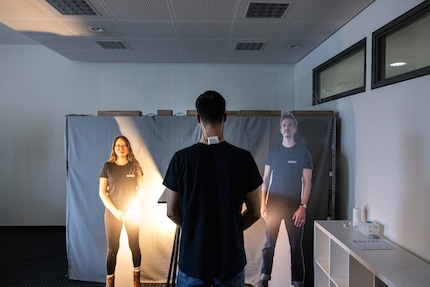
Even when Auriel closes his eyes, the sensors notice this and record it accordingly - this is also known as meditation tracking. The device measures the strength of the brain's alpha waves, which indicate how relaxed someone is. This and so-called theta waves can also be used to determine whether someone is so relaxed that they are about to fall asleep: in this case, different frequencies are active in the brain than usual. High beta waves, on the other hand, indicate that someone is concentrating.
The Idun team can read all of this with the headphones - Simon and co. just can't read minds yet. But I can't help thinking that they would like to be able to do that too. Simon warns: "EEG measurements can provide insights into brain activity, but we are a long way from being able to read thoughts. The measurements mainly show superficial, so-called 'cortical' regions and have a limited spatial resolution."
In the scenario described above and elsewhere, Idun collects very sensitive data. "We are committed to pioneering ethical topics," Simon explains. The company is working with several companies to define standards and guidelines for the use of neurotechnology in the mass market. This is because neurotechnology and AI in general could potentially have a strong impact in these areas, says Simon.
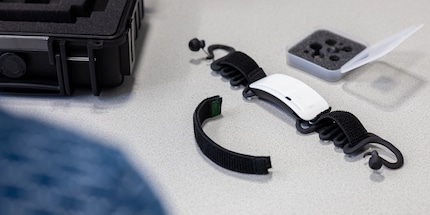
In addition, the start-up has put together a Neuroethics Advisory Board, which includes prominent names from the neuroscene, such as Marcello Ienca, Professor of Ethics and Artificial Intelligence at the Technical University of Munich. Together, the team has designed a neuroethics charter. Simon goes on to explain to me that, depending on the area of application, user data is only stored locally on the respective devices - and may only be passed on and analysed in accordance with strict guidelines. However, analysing brainwaves has enormous potential. For the industry and also for users - if they want it.
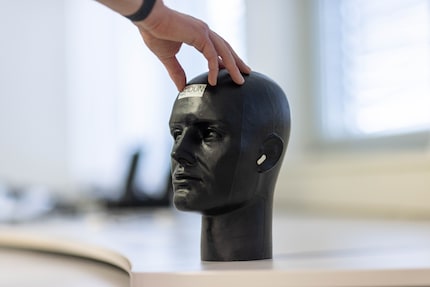
I say goodbye to Simon and step out into the afternoon sun on the outskirts of Zurich. Headphones that measure brain waves - what else is there? At some point, Simon would like to be able to install the sensors in small true wireless headphones that would be indistinguishable from the models we wear every day. I find that as exciting as it is frightening. Exciting because it represents progress in healthcare and new areas of application. The previously cumbersome measurements are much quicker and easier. Scary because nobody knows exactly what could be done with this data.
Cover photo: Christian Walker
Testing devices and gadgets is my thing. Some experiments lead to interesting insights, others to demolished phones. I’m hooked on series and can’t imagine life without Netflix. In summer, you’ll find me soaking up the sun by the lake or at a music festival.
Interesting facts about products, behind-the-scenes looks at manufacturers and deep-dives on interesting people.
Show all
Background information
by Darina Schweizer

Background information
by Rainer Etzweiler

Background information
by Kevin Hofer